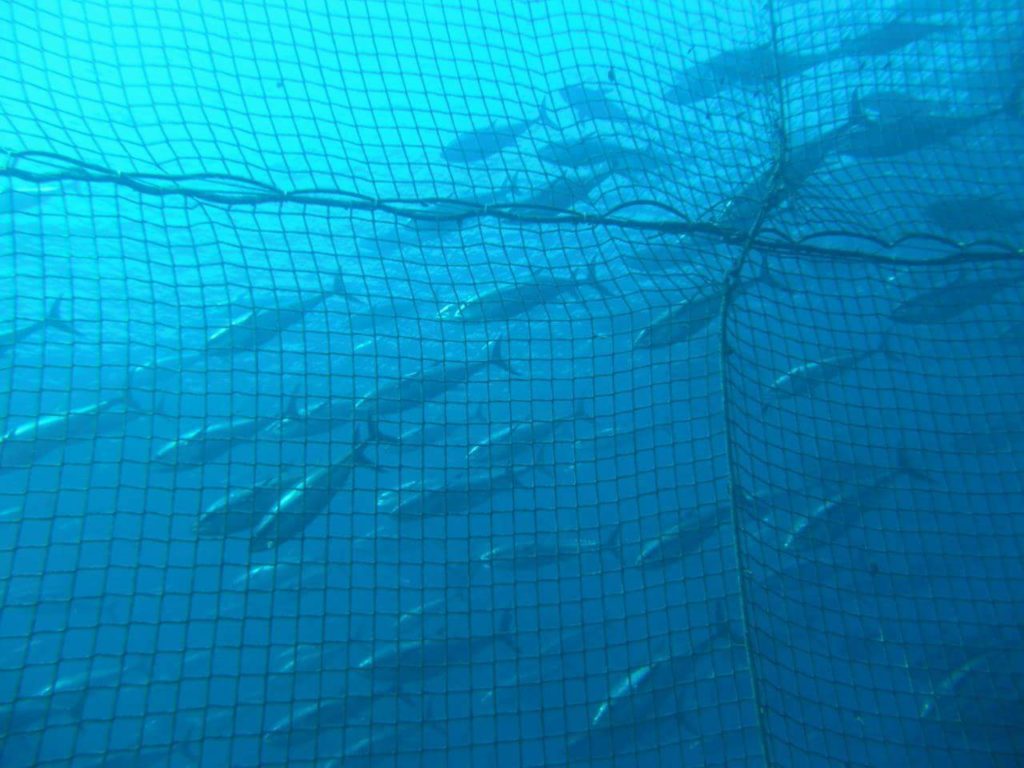Do you love tuna sushi? Did you know that the number of tuna in the ocean has gone down drastically due to overfishing? The law of supply and demand tells us that as the availability of fish decreases, the price will go up. This is bad news for fish and the humans who eat them.
Researchers in Japan want to make sure future generations will get to enjoy eating tuna without further hurting the wild tuna populations. To achieve this goal, scientists from many universities have been developing a method for raising bluefin tuna from egg to adult and back to egg entirely in captivity. Currently, most tuna farming is more like ranching – farmers take young fish from the wild and grow them in net pens, then slaughter them once they’ve reached market size. This does not create any additional tuna to help replenish wild populations. In fact, it can hurt wild tuna in certain areas where the fish harvested for ranching aren’t counted towards the fishing quota. If a reliable method for raising all life stages of tuna in captivity is developed, the ranching process can be discarded and harvesting of wild tuna can be reduced.
Unfortunately for all seafood lovers, bluefin tuna is a surprisingly fussy and fragile fish, leading to many challenges along the way. Bluefin tuna have extremely fragile skin which is easily damaged by human handling, leading to infection or even death. Tuna also startle easily – changes in light or sound can cause them to start swimming at full speed, often colliding with the sides of the tank or net and dying. Most frustratingly, tuna will rarely spawn in captivity and thus it took a long time for researchers to get fertilized eggs from captive tuna. Even when the tuna do spawn, only a small percentage of the offspring survive. Because of the fragility of the eggs and larvae, they can die by simply touching the side of the tank. In addition to death from collisions, tuna larvae will eat each other if not given a very specific feed.
The key to successfully farming any species is being able to control its reproduction, which means choosing which individuals mate and when the mating occurs. The main difference between breeding fish and breeding farm animals like cows is that female fish produce thousands or even millions of eggs at a time, depending on the species. Compared to mammals, fish eggs are simple to fertilize and hatch outside of the body, making it possible to combine the eggs of one female with the sperm of many males and vice versa.
Early this year, scientists from Kindai published a paper about their newest breakthrough. For the first time, they have successfully collected mature eggs and sperm from entirely captive-raised Pacific bluefin tuna. The researchers went to a farm with tuna that were ready for slaughter and obtained eggs and sperm before the fish were killed by massaging the belly and letting the eggs or sperm fall into a dry container. The sperm and eggs were later mixed and seawater was poured into the container to activate them. Even though the percentage of female tuna with mature eggs was very low (no more than 6%), the fact that each tuna produces hundreds of thousands of eggs meant that the researchers were able to raise enough young fish from the available eggs to keep the life cycle going. Previously, scientists would just wait for a random spawning event to collect the fertilized eggs that would float to the side of the net, which meant there was no control over which fish mated. This experiment allowed the scientists to control which males fertilized which eggs by instead harvesting the eggs and sperm from individual animals and combining them in the lab.
This is a significant development in bluefin tuna farming because it makes it possible to selectively breed tuna. Picking only the best fish and combining their eggs and sperm creates a new generation that will be better than the one before it. Using selective breeding, scientists can improve tuna by helping them to grow faster, reproduce earlier and more regularly, or have thicker skin. Selective breeding can also make them calmer and reduce the amount of food they need, which is currently around 12 pounds of food to grow 1 pound of tuna.
This research is a big step towards reducing the amount of wild tuna that need to be harvested to satisfy demand, meaning that both bluefin tuna and people who love to eat them can rest easy.


